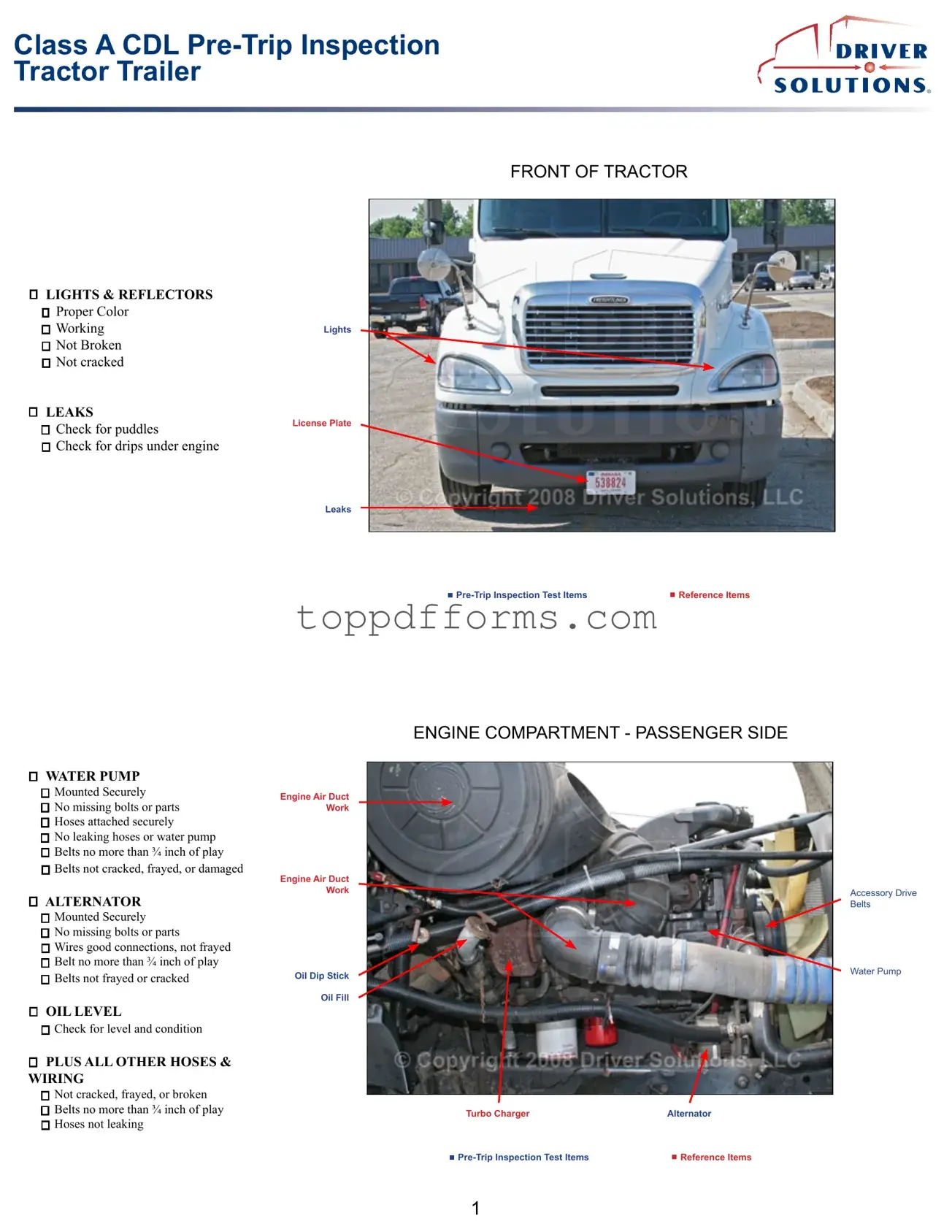What is the purpose of the Pre Trip Inspection Checklist?
The Pre Trip Inspection Checklist is designed to ensure that vehicles are safe and ready for operation before hitting the road. By following this checklist, drivers can identify potential issues that may compromise safety, such as tire conditions, fluid levels, and brake functionality. This proactive approach helps prevent accidents and promotes the well-being of both the driver and other road users.
Who is responsible for completing the Pre Trip Inspection Checklist?
It is the responsibility of the driver to complete the Pre Trip Inspection Checklist. Each driver should take the time to thoroughly inspect their vehicle before starting a trip. This not only ensures compliance with regulations but also fosters a culture of safety within the organization. Drivers are encouraged to report any findings or concerns immediately.
What items are typically included in the Pre Trip Inspection Checklist?
The checklist usually covers several critical areas, including but not limited to, checking the tires for proper inflation and tread depth, inspecting lights and signals, examining fluid levels (like oil and coolant), and ensuring that brakes function correctly. Additionally, a visual inspection of the vehicle’s body and undercarriage can help identify any visible damages or leaks.
How often should the Pre Trip Inspection Checklist be completed?
The checklist should be completed before every trip. Consistency is key to maintaining vehicle safety. By making this inspection a routine part of the driving process, drivers can catch small issues before they escalate into larger problems. This practice not only enhances safety but also extends the life of the vehicle.
What should a driver do if they find an issue during the inspection?
If a driver identifies any issues during the inspection, they should report them immediately to their supervisor or the maintenance department. Depending on the severity of the issue, the vehicle may need to be repaired before it can be used. It's crucial to take these findings seriously, as addressing them promptly can prevent accidents and ensure compliance with safety regulations.
Is there any training provided for completing the Pre Trip Inspection Checklist?
Yes, many organizations provide training for drivers on how to properly complete the Pre Trip Inspection Checklist. This training often includes hands-on demonstrations and guidance on what to look for during inspections. By equipping drivers with the necessary knowledge and skills, organizations can foster a safer driving environment and reduce the risk of vehicle-related incidents.
